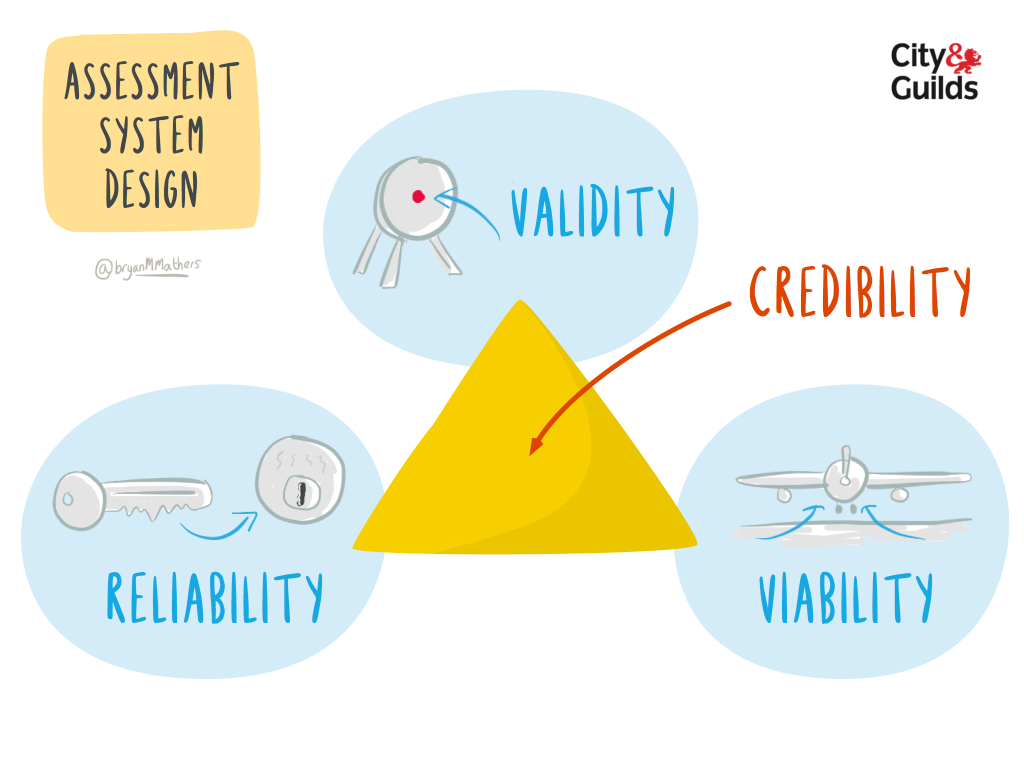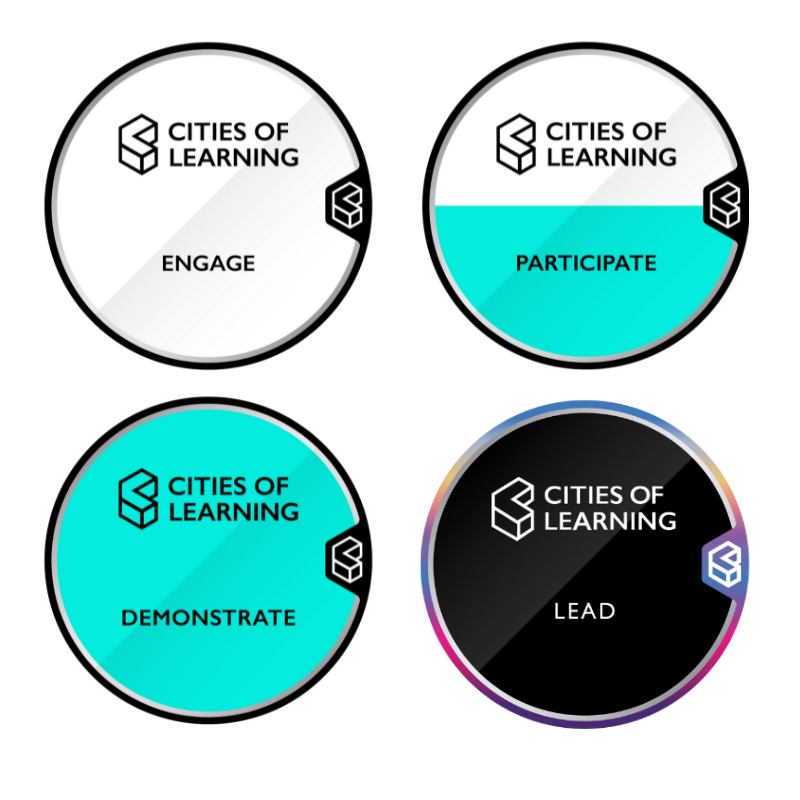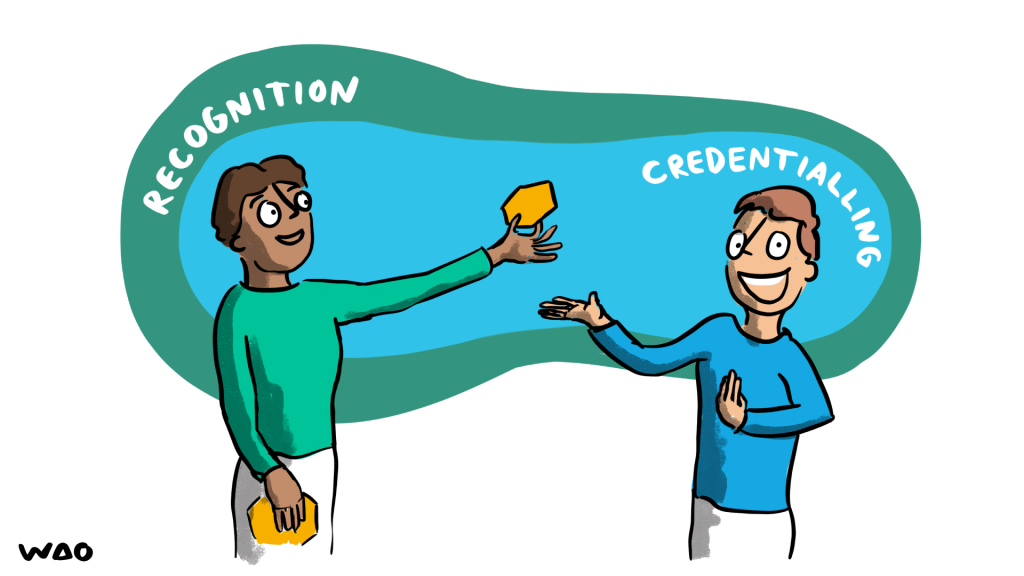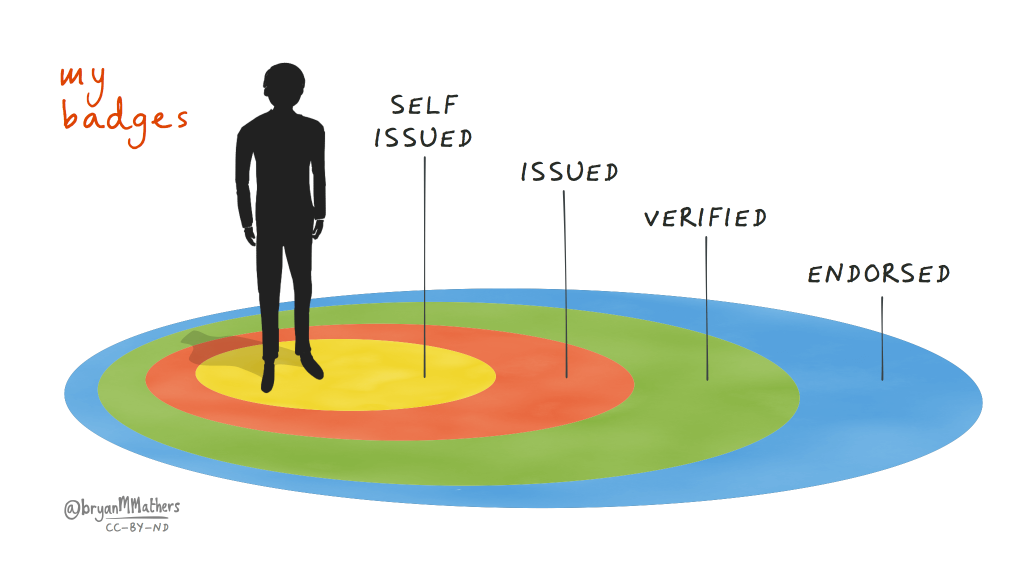The role of endorsement in Open Badges and Open Recognition
Lately, I’ve been rethinking the importance of endorsements in the Open Badges ecosystem. This is due to changes in version 3.0, which now links Open Badges with a model called Verifiable Credentials. These changes have made me revisit some of my earlier ideas, especially as I’ve been doing more work on Open Recognition.
Some context
After leaving Mozilla in 2015, I worked as a consultant for City & Guilds, focusing on badges and digital qualifications. Originally coming from a background in formal education, I found it really interesting to see how organisations made sure their assessment systems were credible.

Image CC BY-ND Bryan Mathers
To explain the above diagram:
- Validity refers to the extent to which an assessment accurately measures what it is intended to measure. In other words, a valid assessment is one that successfully captures the skills, knowledge, or attributes it claims to evaluate.
- Reliability is concerned with the consistency and stability of assessment scores over time and across different conditions. A reliable assessment will yield similar results when administered multiple times under similar conditions.
- Viability refers to the practicality and feasibility of the assessment system. This includes considerations like cost, time, resources, and the technological infrastructure needed to administer the assessment.
These three elements combine to produce Credibility in the assessment system, by which we mean that stakeholders such as educational institutions, learners, and employers have confidence in the results it produces.
While it’s good that established awarding bodies like City & Guilds are using badges, my main interest is in challenging the existing system. That’s why it’s crucial for more people to understand the concepts that these organisations use.
What is endorsement?
When we’re unsure about the importance of something or whether to pay it attention, we often look for signs to help us decide. As William James said, “Our faith is faith in some one else’s faith, and in the greatest matters this is most the case.” So, if someone or an organisation you trust vouches for another person or topic, you’re likely to see it in a positive light.
This trust is often formally known as ‘endorsement,’ and it’s a feature of the Open Badges standard that’s often overlooked and underused.
In a 2016 book chapter called ‘The Role of Endorsement in Open Badges Ecosystems,’ Deb Everhart, Anne Derryberry, Erin Knight, and Sunny Lee highlighted how crucial endorsement is. It’s not just about supporting badge pathways but also about building networks of trust. These networks are key to the practice of Open Recognition.
Endorsement encourages the development of trust networks and connections among stakeholders in communities such as education, government, standards bodies, employers, and industry associations. Badge endorsers make their values known by analyzing the quality of specific badges, including how the badge is defined, the competencies it represents, its standards alignments, the process of assessing badge earners, and the qualifications of the badge issuer to structure and evaluate the learning achievement represented by the badge. With endorsement, badge earners are better able to understand which badges carry the most value for their goals. Badge issuers benefit from external validation of their badges. Educators, employers, and other consumers who evaluate learners’ achievements can better determine which badges are most appropriate in their contexts.
At the moment, the majority of badge platforms use v2 of the Open Badge standard. Endorsement isn’t a mandatory field when setting up the badge’s metadata. So, what’s the benefit of using it?
Taking City & Guilds as an example, they endorse the RSA’s City of Learning Badging Standard. In other words, they put their reputation behind it after checking that the RSA’s approach is valid, reliable, and viable.

Just like anyone can follow a curriculum, anyone can align their badge system with the Engage / Participate / Demonstrate / Lead approach. But this doesn’t guarantee their badges will get endorsed. To get an endorsement, there needs to be a relationship between the one giving the badge and the one endorsing it.
In theory, individual badges (called ‘assertions’) can get their own endorsements, separate from the general type of badge (known as ‘badge class’). But this is rare in practice. It’s usually the case that an organisation endorses a ‘Leadership’ badge as a whole, rather than endorsing a specific person’s ‘Leadership’ badge. However, this is getting easier, as some platforms are now set up to handle mass endorsement requests.
Changes to endorsement with v3.0 of the standard
Earlier this year, I published a post highlighting key updates to the Open Badges standard as it transitions to version 3.0. One significant change I didn’t mention at the time is how endorsements are managed.
The following example is taken from the endorsements section of the specification. I’ve rewritten it as the original is quite confusingly worded:
Ralph received a badge from the hospital where he works. This badge lists the skills needed for his role. He asks his workmates to vouch for these skills. The badge platform helps by sending this request to his peers, letting them review his skills, and then giving out endorsement badges. These new badges link back to Ralph’s original badge, name his colleagues as the ones who endorsed him, and show that Ralph is the one who received the endorsement.
A note from the editor below this example clarifies that, unlike previous versions of the standard, v3.0 requires giving out extra credentials for endorsements. This means endorsements are usually added after a badge has already been given. In previous versions, endorsement details could be part of the original badge, included in a reissued badge, or kept separately on the badge platform.
The change is possible because Open Badge v3.0 and Verifiable Credentials do not require a badge image. Although I saw this as some kind of sacrilege when I first heard of it, I’ve come to appreciate the merits of such an approach. It makes a lot sense for endorsements.
How endorsements enable Open Recognition
Another part of the v3.0 specification mentions self-assertion, which means an individual issuing a badge or credential to themself. We’ve talked about this ever since the early days of badges, but it was seen as either dangerous or frivolous by those with a vested interest in the status quo.
I’ve again slightly reworded the example found in the self-assertion section of specification for ease of understanding:
Stacy has made a mobile app that shows off her skills in coding, design, and product management. She sets up an account on a badge platform and designs a badge that lists these skills. Using her digital wallet app, she links to the badge platform and gives herself this badge. The badge includes screenshots and a link to her mobile app as proof. Stacy uses this badge and similar ones as items in her verified portfolio.
The editor’s note explains that in older versions of the specification, it was possible for individuals to create badges for yourself and colleagues. However, the details about who issued the badge were designed to be used by organisations. Now, v3.0, these details can refer to either an organisation or a person, with both the issuer and the recipient profiles having similar optional details. This makes means that an organisation can also be listed as the recipient of a badge.

Image CC BY-ND Visual Thinkery for WAO
This is huge for the purposes of Open Recognition:
Open Recognition is the awareness and appreciation of talents, skills and aspirations in ways that go beyond credentialing. This includes recognising the rights of individuals, communities, and territories to apply their own labels and definitions. Their frameworks may be emergent and/or implicit.
It means the following workflow is possible (and entirely legitimate):
- An individual self-issues a badge for something that makes sense to them, in their own language, and in their own context/community
- They ask for this badge to be endorsed by other members of the community
- The individual uses their badge, endorsed multiple times, to gain greater recognition in their community/sector/field
It’s worth noting that this doesn’t require traditional awarding bodies to validate or acknowledge their experience. This is key. While it’s possible for these bodies to do so, the groundbreaking aspect of Open Badges has always been to democratise the issuing of credentials, allowing anyone to issue badges to anyone, for anything.
Conclusion

Image CC BY-ND Bryan Mathers
The above image came out of a conversation I had with Bryan back in 2017. At the time, endorsement was still a very organisation-centric way of creating credibility within the Open Badges ecosystem.
What I’m delighted to see is that finally the early revolutionary promise of badges is being recognised at a technical level. I can’t wait to see how individuals and organisations start using endorsement with v3.0 of the standard, and I’m excited to help them explore ways of doing so!

Great post Doug, I shared on.
Minor quibble: most OB platforms are v2, not 2.1:
https://site.imsglobal.org/certifications?refinementList%5Bstandards_lvlx%5D%5B0%5D=Open%20Badges
Badge Connect was not very popular, some questioned that it should be a version at all. Seems it’s still “Candidate Final”, not a final specification.
Ah thanks Don, have updated the post to reflect that 🙂
I’m interested in finding my way to use the 3.0 standard and to work on different “intensities” of credibility of verification, I really like th image of “self issued” – although in my org we have the idea of community issued/recognized from others in their program. I’d be interested to learn how to issue 3.0 badges easily, I’m building a no code system to do that 🙂
Sounds like you need to talk to the Digital Credentials Consortium and take a look at their technology stack? https://digitalcredentials.mit.edu